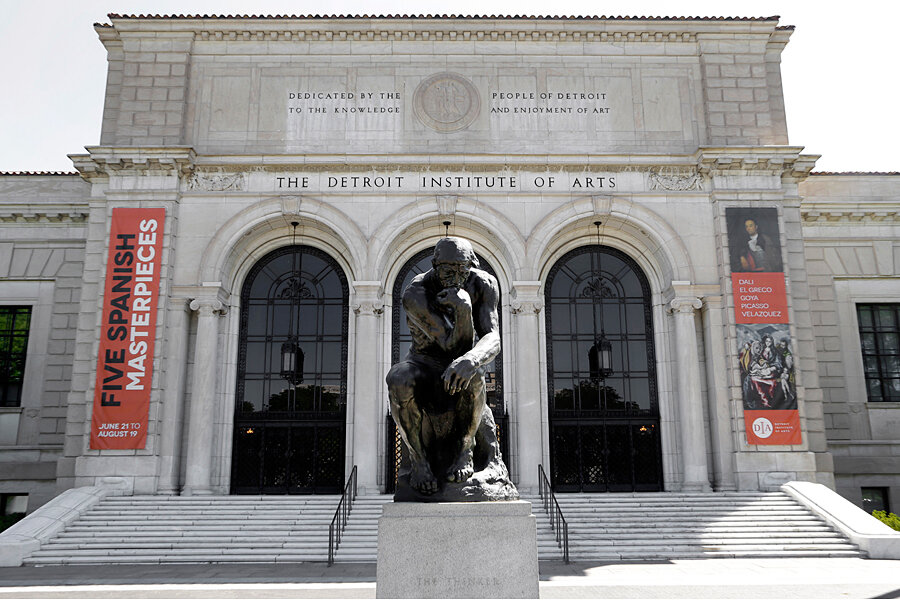Detroit bankruptcy: Bondholders balk at plan for city's artworks
Loading...
Judge Steven Rhodes, who is presiding over Detroit’s efforts to emerge from bankruptcy, agreed last week to a restructuring plan submitted by the city. The plan still requires a vote by pension groups, labor organizations, and bond insurers, and state lawmakers would have to approve a $350 million cash injection from the state. But it has appeared that most groups are onboard with the plan.
A potential snag, however, appeared Thursday. In a three-hour hearing, attorneys representing two bondholders – creditors for the city that do not fare as well in the plan as some other groups – took aim at the arrangement that has been struck for the city’s art collection at the Detroit Institute of Arts (DIA). That collection is central how the plan is carried out.
The plan values the collection at $816 million, but the bondholders argue it should be worth more. A higher value for the collection could enable the city to fulfill more obligations.
At the hearing, the bondholders called for an independent appraisal and asked Judge Rhodes to give approval for some of the art to be physically removed for inspection by interested buyers.
Rhodes ruled against removing the art, some of which had the potential to be damaged.
“The risk to the art that could come from granting this relief ... is a substantial risk and one not to be undertaken lightly,” he said.
Creditors, the judge said, could view the collection by paying a ticket to the museum, and it would be up to the DIA to allow viewing of artwork that remains in storage.
The plan proposes spinning the collection into an independent trust, and the trust would be required to keep the art in the city. This would happen by combining the $350 million from the state and $466 million pledged by 12 philanthropic foundations. In a “grand bargain,” that money would then be used to bring down the pension costs of at least 32,000 city employees and to pay down other obligations.
Creditors believe the artwork is worth more because they received hypothetical investor bids from earlier this year that were much higher than the appraisal in the plan. Outside bids ranged from $895 million for just 116 pieces of art to a $2 billion loan using the entire collection as collateral, one of the bondholders, Financial Guaranty Insurance Co., said in court papers.
There are 1,741 pieces of art currently hanging in the museum. The total collection numbers more than 66,000 pieces. Attorneys for the museum had argued that, because of the size and fragile nature of some works, any removal of them would require heavy machinery, putting them at risk.
The two bondholders represented in court Thursday were Financial Guaranty Insurance Co. and Syncora Guarantee Inc. They face losses of up to $1.1 billion in the restructuring plan, according to court filings.
Under the plan, general bondholders could see the value of their bonds diminished by about one-quarter. For other bondholders, the cuts are even more severe. They see pension and labor organizations as getting a better deal. Retired police and firefighters, for example, face no cuts to their pensions, although their cost-of-living expenses will not be increased at the same levels as before.
Also as part of the “grand bargain,” the DIA pledged to raise at least $100 million. The museum has asked Detroit’s “Big Three” automakers – Ford, General Motors, and Chrysler – to contribute more than $50 million total, the Detroit Free Press reported this week. If the automakers agree, the DIA is expected to turn to automotive suppliers in the Detroit area for similar pledges of support.
A deal may come as early next week, the Free Press reports, and the automakers could make such an announcement together. All three automakers released statements this week saying they are reviewing the request.
“The DIA must be central to any plans for a revitalized Detroit. Both GM and the GM Foundation are giving very careful consideration to how we can help preserve this treasure at such a critical time,” GM said in a statement.






